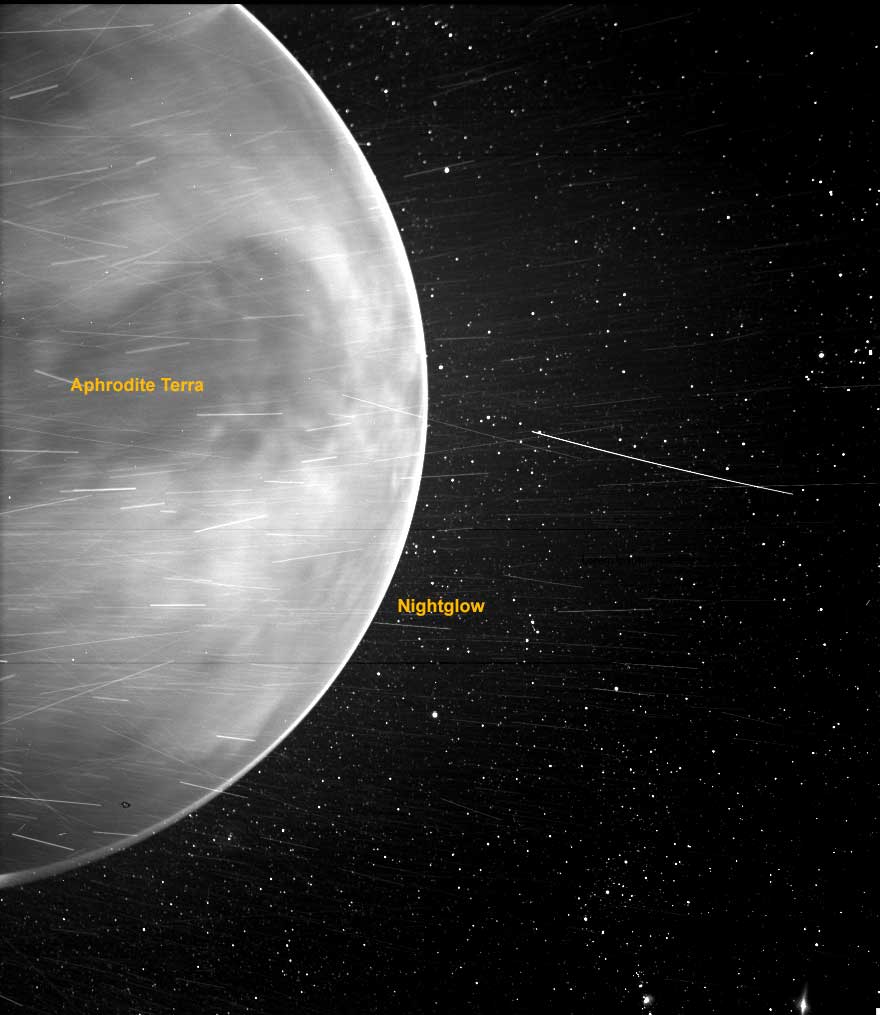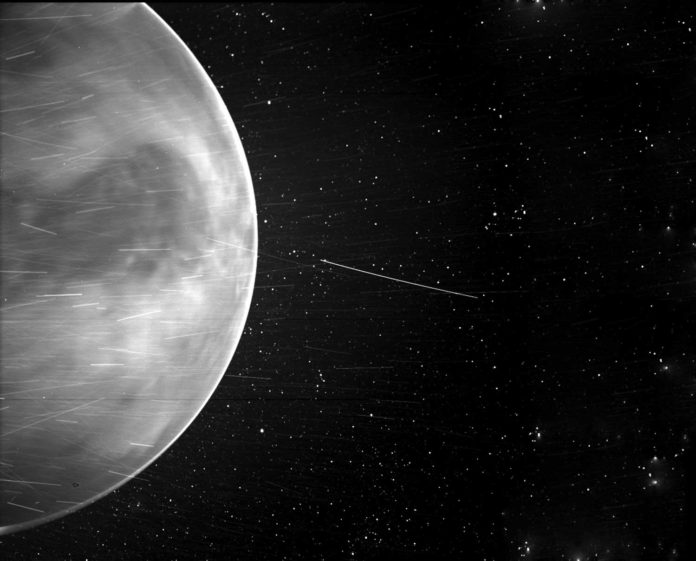On July 11, 2020, the onboard Wide-field Imager for Parker Solar Probe, or WISPR, captures stunning views of Venus from 7,693 miles away during the close flyby of the Venus.
In NASA‘s Parker Solar Probe mission, Venus has a critical role: It whips the probe using its gravity to bend the spacecraft’s orbit. During the seven-year mission, the spacecraft whips by Venus a total of seven times.
At Venus, the camera detected a bright rim around the planet’s edge that may be nightglow — light emitted by oxygen atoms high in the atmosphere that recombine into molecules in the nightside. The noticeable dark feature at the center of the image is Aphrodite Terra, the largest highland region on the Venusian surface.
Due to low temperature, i.e., about 85 degrees Fahrenheit (30 degrees Celsius) cooler than its surroundings, the feature appears dark.

Angelos Vourlidas, the WISPR project scientist from the Johns Hopkins Applied Physics Laboratory (APL) in Laurel, Maryland, said, “That aspect of the image took the team by surprise. WISPR is tailored and tested for visible-light observations. We expected to see clouds, but the camera peered right through to the surface.”
Brian Wood, an astrophysicist and WISPR team member from the U.S. Naval Research Laboratory in Washington, D.C. said, “WISPR effectively captured the thermal emission of the Venusian surface. It’s very similar to images acquired by the Akatsuki spacecraft at near-infrared wavelengths.”
For more insight into the July 2020 images, the WISPR team planned a set of similar observations of the Venusian nightside during Parker Solar Probe‘s latest Venus flyby on Feb. 20, 2021. Mission team scientists expect to receive and process that data for analysis by the end of the April.
